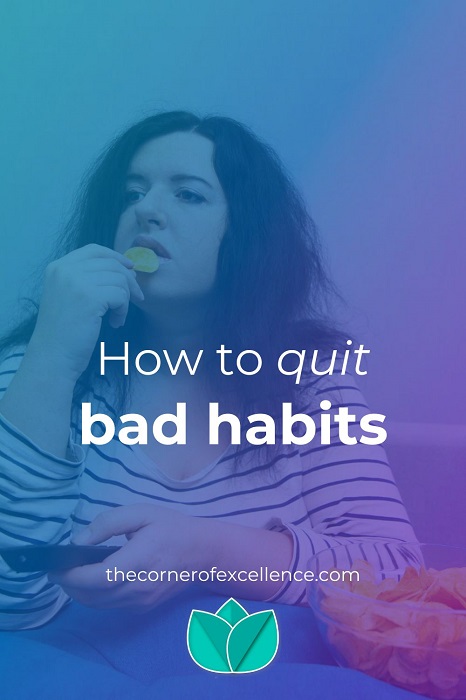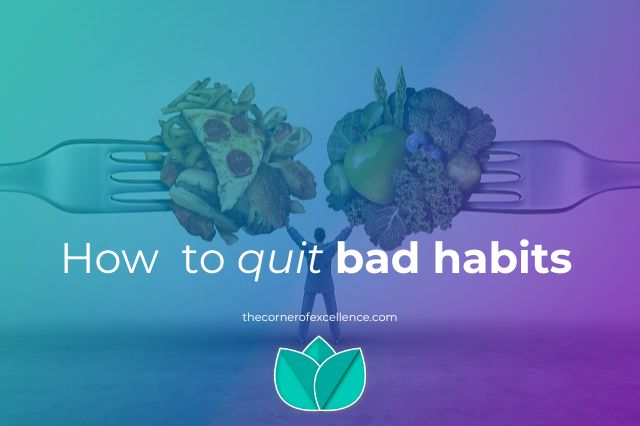Habits are very powerful. That is because human beings are creatures of habit. That has its reason for being and its benefit when we talk about good habits. However, it also explains why it is so hard for us to give up bad habits. Let us see why we find it difficult and how to achieve it.
Why is it difficult to quit bad habits
Getting rid of bad habits is not usually easy for us. There are several reasons for this. In the following you will find the main ones.
1. We are creatures of habit
On the one hand, it is because the most comfortable thing is to stay the same. Our body and brain seek to save energy. Any action that we have managed to automate requires less energy.
2. Bad habits are comfortable and comforting
Related to the previous point, bad habits are comfortable like old acquaintances or like a soft couch. Creating a new habit or modifying an existing habit requires getting out of your comfort zone.
In other words, it requires a conscious effort. But like I said before, our brain and body prefer what is easy for them in order to save energy.
3. Bad habits attract us
Sorry to say, but bad habits tend to be attractive, flashy, or even addictive to us. Let us say you spend a lot of time on social media. The curiosity about what is happening, the beautiful or striking images … everything attracts us to continue browsing.
Maybe you are hooked on games. On the one hand, both in the case of social media, games and other applications, they usually attract you with notifications. Then the games are obviously usually designed so that you want to continue playing and find it difficult to cut.
Now let us think about food. Why do we like foods so much that we know are not very healthy? That is because they contain a studied amount of sugars, fats, and additives that give them the best possible flavour. When we need to comfort ourselves or relieve stress, our body seems to ask for those ingredients.
4. We condition ourselves
Is it hard for you to get up in the morning? Do you let the alarm go off over and over again? Then you have educated yourself not to respond to the stimulus.
Do you have a hard time drinking enough water? Again, you have learned to suppress the signals and needs of your body.
5. We associate them
We usually associate habits with places or situations. You meet friends and have a beer. You wait for the bus and take out your mobile phone to check social networks. Maybe you feel bored, so you start playing on your smartphone or binge-watching series on television.
Have you had a long and stressful day at work? So you drop on the sofa and vegetate in front of the TV; and order a pizza or a hamburger to comfort yourself.
How to get rid of bad habits
As we have seen, acquiring bad habits is easy because they are comfortable, attract us and comfort us. But the points we have seen give us some clues on how to quit bad habits.
A habit is made up of four phases: cue or stimulus, craving, response, and reward. For example, you pass in front of a pastry shop and you see some beautiful cupcakes in the window. Maybe an irresistible smell also reaches your nose. This is the stimulus that makes you crave a cupcake. So you enter the bakery and buy one (response). Finally you eat the cupcake (reward). To break bad habits we need to act on the four phases.
1. Look for a good reason
First of all, as with all kinds of goals, it helps to think of a good reason for wanting to quit a bad habit. Having a “why” to remind ourselves helps motivate us when we falter.
2. Use the WOOP method
With the WOOP method, you reflect on your wish, the desired outcome, the possible obstacles, and then make a plan. Imagine in detail what your life would be like without that bad habit. How do you want to be and live? Then think of all the possible traps that could cause you to relapse. Finally, establish a plan of what to do when you face these obstacles.
3. Out of sight, out of mind
Have you ever cut off a relationship and avoided the places you used to hang out with that person for a while? Well, when it comes to breaking bad habits, this trick can also help you. As we have seen before, the first phase of a habit is a cue that stimulates us. If you manage to make this stimulus invisible, it will be more difficult to fall into the temptation.
Depending on the habit you want to get rid of, stopping seeing objects or places that remind you of it will help you. It may be a matter of repositioning furniture or objects at home. Storing the TV remote out of sight. Keeping your mobile phone out of sight and silence notifications. Change your routes so as not to pass near a certain place.
In this sense it also helps to choose who you spend your time with. Can you surround yourself with people who do not have the bad habit that you want to quit or have the good habits that you want to acquire?
4. What do you want and need?
Underlying every habit is a desire and a need. This is the second phase of the habit, the craving, as I mentioned before. If we think of Maslow’s pyramid, we have basic physiological, safety, social or belonging needs, needs for self-esteem and self-realisation.
If you think about your bad habits, they satisfy some of those needs. Junk food feeds you (physiological need) even if it is not in the best way. A sedentary lifestyle, like spending hours on the couch, responds to the need of conserving energy and feeling safe.
Entertaining yourself with social networks can respond to the needs to connect with others, gain social acceptance and approval. Playing video games may have to do with seeking status and prestige. Living for work and not disconnecting in your free time may respond to the needs of prestige, self-esteem and self-fulfillment.
Once you understand that underlying motive, consider how you could satisfy it in a more positive or healthy way.
5. Make it unattractive
Also reflect on how that bad habit hurts you and the benefits of avoiding it. If we associate negative feelings with a bad habit, it will seem less attractive to us.
6. Replace bad habits
Simply quitting a bad habit can be tricky if we do not know what to do instead. Therefore, and related to the previous point, think of a positive and attractive habit with which to replace your bad habit. If it is a new habit to acquire, combine it with another good habit that you already have.
Maybe you want to watch TV less and read more instead. In place of playing video games, how about opting for a board game with your family or friends, doing crafts or studying something? Instead of dropping on the couch after work, how about taking a walk or doing some exercise first?
Do you want to stop checking work emails in your free time? In addition to silencing your phone, turning it off or leaving it out of sight, try to make fun plans that help you disconnect from work.
7. Make the bad habit hard
Another trick to quit a bad habit is to make it harder for yourself. In this way we act on the third phase of habit: the response. Also, think about things you can do that promote better habits for the future.
For example, you can silence notifications or directly uninstall fast-food delivery, social media or game apps from your smartphone. You will see how you will tend to use them much less if it is more difficult to access them because you do not have them at hand on your mobile phone.
Then, if you do not have sweets or unhealthy snacks at home, you reduce the craving and make it difficult for you to access them. The chances that you leave the house expressly to buy them reduces, because that means overcoming the barrier of leaving the comfort of your home. To avoid buying them in the first place, I suggest you always shop with a list.
Depending on the bad habit you want to break, think about how you can make it more difficult for yourself to relapse, or make it easier to turn to the healthy or positive alternative.
8. Motivate yourself
We often think in terms of “I have to do this” or “I must stop doing that.” Try modifying your language by replacing “have to” for “want to”. This may seem silly. But that little change can help us make good habits seem more attractive and bad habits less desirable.
9. Make the bad habit unsatisfactory
The fourth phase of a habit is the reward. To act on this step, consider how you can make the bad habit unrewarding or unpleasant. Here it can be very helpful to find someone to be your accountability partner.
In the beginning I gave the example of someone who has a hard time getting up. You could try using a loud, unpleasant alarm. Or you could ask your partner to remove the blanket or give you a push. Thus languishing in bed will no longer be so pleasant.
It may help you think about how to “punish” yourself if you succumb to your bad habit. For example, if you skip your diet, you will have to exercise twice as long. If you waste time on social media or with video games, your partner has permission to hide your phone until the next day.
Or if you succumb to laziness and sedentarism instead of exercising, you have to invite your partner to a restaurant of their choice. There are many options and you will need to choose which punishment bothers you the most or takes more effort than sticking with avoiding your bad habit.
Do you want to quit your bad habits?
Which bad habit would you like to give up? Have you ever tried before? If this is the case but you have not succeeded, why do you think this is the case? Which of the tips do you think will help you the most?

Sharing is caring!




